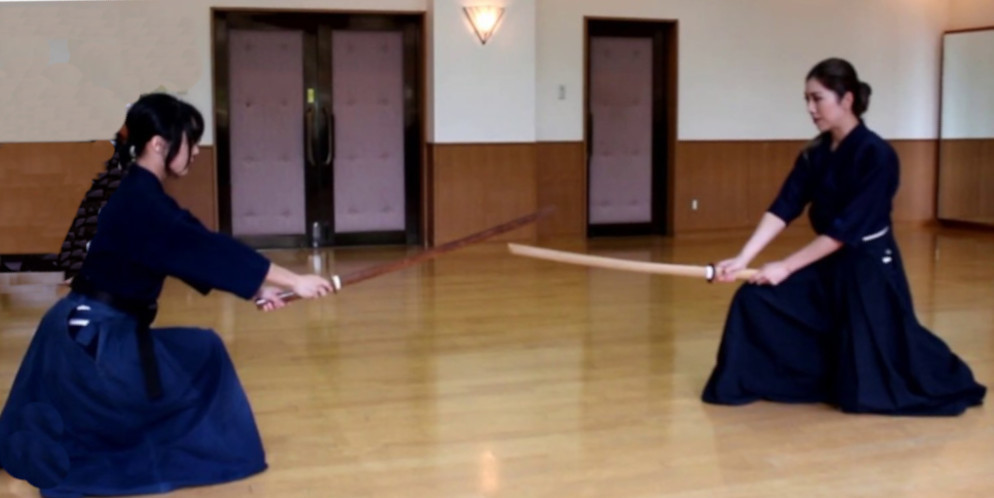Kobudō: The path to fighting like a real Japanese warrior

In a society that values prescribed pathways to success, carving one’s way as an outsider is rarely the first choice in Japan, but for Alice Iwamoto, who is fashioning an independent acting career from scratch, it’s been the only choice.
To achieve her goal, the 27-year-old former dancer has spent the two years since arriving from Australia feverishly acquiring the various skills that will allow her to make it as an action actor in Tokyo’s growing freelance film-making industry.

In retrospect, it seems fitting that someone seeking diverse skills found kobudō, perhaps the most esoteric of Japanese martial arts. Translated as “old martial arts,” kobudō is a collective term for Japanese traditional techniques used in combat and martial arts established before the Meiji Restoration (1868).
“Kobudō was a discipline developed to train warriors to be flexible, to survive regardless what weapon was at hand,” says Iwamoto’s shihan (senior instructor), Hiroyuki Yashiro of the dojo Musubi An, in a recent interview. “A warrior might enter combat with a sword, but if he lost it he would need to know how to fight on with a pole. If he lost that, he would need to battle with his bare hands.”
Although kobudō involves fundamental prescribed movements, known as kata, to understand the building blocks of the different skills, Yashiro says the goal is integrating one’s self into one’s skills, and vice versa.
“If everyone is practicing the same kata, moving at identical angles, that’s boring. We’re not robots,” he says. “You have to adapt and develop as an individual.”
Iwamoto, whose career is slowly developing momentum through a variety of channels making use of either her language skills or her action work, has a history of improvising from an early age.
At the age of 8, she moved with her family from Fukuoka to Queensland, Australia, to a rural community that, she says, was inhospitable to Asians. After a year of studying English, she and her older sister entered the local school and it became a daily struggle.
Frustrated and isolated, she often invented ways to learn and express herself through play acting. She and her sister created their own school at home where Iwamoto played the teacher and her sister took on the roles of the different students. When she finished high school and left home, Iwamoto approached life in high gear.
“I just wanted to do everything I couldn’t do the past 10 years. I started working at two or three jobs, while going to university,” she says. “I started dancing. I don’t think the instructors believed me when I said I wanted to be a professional dancer, because usually you start at a young age to get into the professional world. I was 18 years old already, but I was very determined to prove them wrong.”
Iwamoto’s desire to make up for lost time, however, led to overtraining and an injury that ended her hopes of a dance career. When she graduated from university, she had no serious job prospects and without feeling any attachment to Australia, she decided to go to Japan. Two weeks after she considered the idea, she was in Tokyo, but without the Japanese education and the level of language skills she needed.
“I had to find a job quickly and the only things I could do were translation or teaching English, so I did those two,” she recalls. “But I felt something was missing — my creative outlet, expressing something with my body, whether that be dance, acting, acrobatics, I didn’t know. I think it occurred to me that I really wanted to try acting, acrobatics and stunts.”
Within two months, she had worked out a path to follow. As she added skills to her portfolio and started finding relevant work, she also began to find other ways to set herself apart from her peers.

Although fighting and sword play are a staple of action acting in Japan, many actors get by just mimicking the movements, but Iwamoto wanted to achieve a higher level of realism. Having years of experience improvising with her creative side, her discovery of a discipline of improvisation in battle seemed an ideal match.
Like Iwamoto, the woman who leads her Musubi An kobudō group, Yui, and Yashiro, came to the martial art through dissatisfaction with the superficiality of fighting in Japanese acting. Yui and Yashiro both practiced kendo but found an authenticity in kobudō they felt could bring sincerity to their acting.
“In kobudō, if you are only mimicking a move, memorizing it and moving on to the next, it comes across as fake. But the kata within kobudō are deep and if you really work to understand what goes into one, then you can distinguish between what is real and what is not,” says Yui. “That is the same in acting. One can tell when acting rings true. Even if the same lines are spoken in conjunction with the same movements, people can tell if it is imitative or not.”
Yashiro says kobudō has a side to it that sets it apart from other martial arts disciplines.
“Coming from an acting background, I recognize kobudō has a space for self-expression. Martial arts depend on perfecting kata, and so often people tend to fixate on them,” he says. “Allowing for freedom, however, creates the possibility of discovery. Actors, singers and dancers have freedom of expression and in kobudō that is also true. If we demand rigid observance of form, it can’t grow.”
Iwamoto describes kobudō’s benefits as “perseverance, diligence and cognitive flexibility.” And in her daily battle, those are real assets.
“I had to keep going, emotionally. I wouldn’t give up the creative outlet I wanted to do, she says of her experience. “I want to find that happy medium, where I’m physically well, I can pay the bills (through work) and do the training — getting that balance.”
(japantimes.co.jp)





